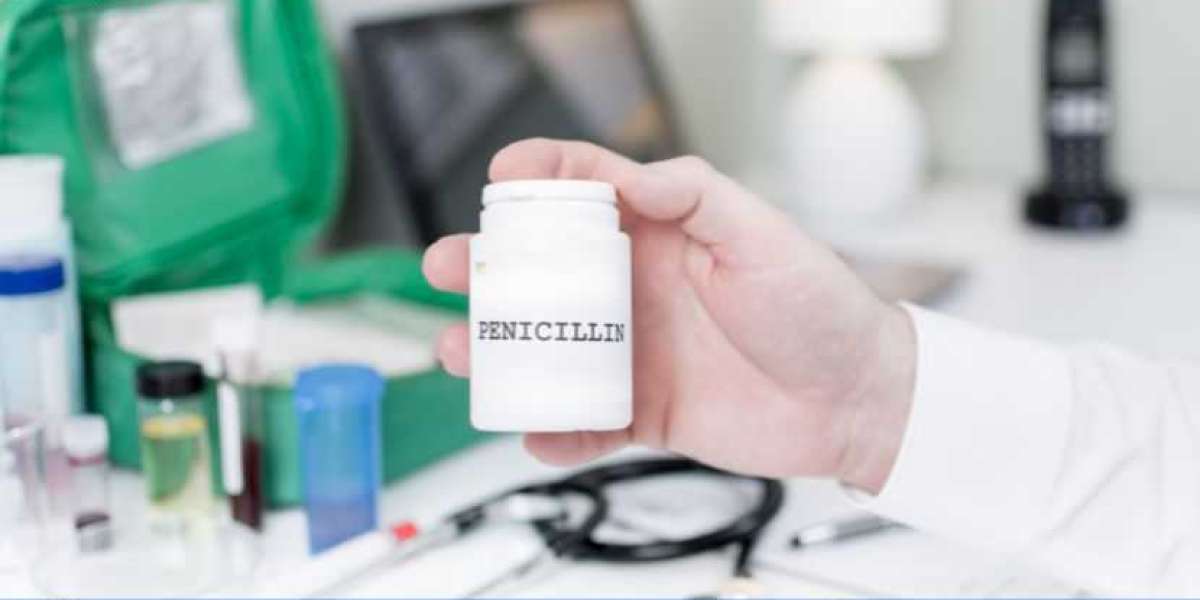Introduction
Penicillin, one of the most important antibiotics in the world, has been used for decades to treat a wide variety of bacterial infections. Its discovery in the early 20th century revolutionized medicine and saved countless lives. With the continued prevalence of bacterial infections and the ongoing development of new antibiotics, the demand for penicillin remains high. For businesses looking to capitalize on this growing market, the Penicillin Manufacturing Plant Project Report provides a comprehensive guide to establishing a successful production facility. The report covers all aspects of setting up a penicillin manufacturing plant, including market research, production processes, regulatory compliance, and financial projections.
Market Demand for Penicillin
Penicillin is widely used in the medical industry to treat infections like pneumonia, bronchitis, and urinary tract infections. The global demand for penicillin continues to grow due to:
Rising Incidence of Infectious Diseases: The increasing occurrence of bacterial infections across the world continues to drive demand for penicillin-based medications.
Global Access to Antibiotics: Governments and healthcare organizations are focused on increasing access to essential medicines, including penicillin, especially in low- and middle-income countries.
Generics Market Growth: As penicillin is a relatively low-cost antibiotic, it is widely used in generic formulations. This trend is expected to continue, particularly as patent protections expire and more affordable generic versions enter the market.
Increased Awareness and Proactive Healthcare Measures: With rising awareness of bacterial infections, individuals and healthcare professionals alike are becoming more proactive in seeking appropriate antibiotic treatments.
Regulations Supporting Penicillin Production: Many countries have strong regulations in place that support the production and distribution of essential antibiotics, including penicillin, to ensure public health safety.
As the market for penicillin continues to grow, establishing a manufacturing plant to produce this vital drug presents an attractive business opportunity.
Get a Free Sample Report with Table of Contents@
Key Components of the Penicillin Manufacturing Plant Project Report
The Penicillin Manufacturing Plant Project Report serves as a blueprint for establishing a successful manufacturing facility. It covers all the critical elements necessary for planning, funding, and operating the plant. Here are the key components of the report:
1. Executive Summary
The executive summary provides an overview of the entire project, outlining the key objectives of establishing a penicillin manufacturing plant, its market potential, and expected outcomes. This section helps potential investors, stakeholders, and business partners understand the purpose of the plant and its projected impact.
2. Market Research and Feasibility Analysis
Market research and feasibility analysis are essential for understanding the demand for penicillin in different regions, the competitive landscape, and the overall viability of the project. This section should include:
- Market Demand Analysis: An evaluation of the global and regional demand for penicillin, including factors like population growth, infection rates, and healthcare access.
- Competitive Landscape: Identifying existing players in the penicillin production industry, their market share, product offerings, and pricing strategies.
- Feasibility Study: Assessing the economic viability of the penicillin manufacturing plant, including cost-benefit analysis, projected profits, and potential challenges.
3. Product Specifications and Technical Requirements
Penicillin production requires specific technical specifications to ensure high-quality, effective medication. This section should cover:
- Types of Penicillin: Penicillin is available in different forms, including penicillin G, penicillin V, and amoxicillin. Each type has its specific uses and production requirements.
- Raw Materials: The primary raw materials for penicillin production are Penicillium mold cultures and various nutrients required for fermentation. This section should detail the sourcing and handling of raw materials.
- Manufacturing Equipment: The production process for penicillin requires specialized equipment, including fermentation tanks, filtration systems, drying units, and packaging lines.
4. Manufacturing Process
The penicillin manufacturing process involves several key stages. This section should describe each step in detail, including:
- Fermentation: The process begins with the fermentation of Penicillium mold under controlled conditions. The mold produces penicillin during its growth phase.
- Extraction and Purification: After fermentation, the penicillin is extracted from the fermentation broth. It undergoes purification through filtration and chemical processes to isolate the active compound.
- Crystallization: The purified penicillin is crystallized into a solid form for easier handling and further processing.
- Formulation and Dosage Form: Penicillin can be formulated into various dosage forms, including oral tablets, capsules, injectable solutions, and topical ointments. The formulation process involves mixing the active ingredient with excipients.
- Packaging: Finally, the penicillin is packaged into its final form, such as bottles, blister packs, or vials, depending on the dosage form.
5. Plant Layout and Infrastructure
A well-designed plant layout is essential for efficient production. This section should outline the infrastructure requirements for the penicillin manufacturing plant, including:
- Raw Material Storage: Adequate storage space for raw materials, including Penicillium mold, fermentation nutrients, and other ingredients.
- Production Area: The production floor where fermentation, extraction, purification, and formulation take place. It should be equipped with reactors, filtration systems, drying units, and crystallization equipment.
- Quality Control Labs: Labs for testing the purity and potency of the penicillin and ensuring it meets regulatory standards.
- Packaging and Distribution: A dedicated area for the final packaging of penicillin into various forms, including labeling and sealing for distribution.
- Utilities: Ensuring a stable supply of essential utilities, such as electricity, water, steam, and waste disposal systems.
6. Regulatory Compliance and Quality Control
In the pharmaceutical industry, adherence to strict regulations and quality standards is critical. This section should address:
- Good Manufacturing Practices (GMP): Compliance with GMP guidelines is essential for maintaining the quality, safety, and efficacy of penicillin. The plant must meet these standards throughout the manufacturing process.
- Quality Control and Testing: The plant must implement rigorous quality control measures to test the purity, potency, and safety of the penicillin produced.
- Regulatory Approvals: The plant must obtain approval from relevant regulatory bodies such as the FDA, European Medicines Agency (EMA), and World Health Organization (WHO) to sell and distribute the product.
7. Financial Projections
Financial projections are essential for evaluating the economic viability of the penicillin manufacturing plant. This section includes:
- Initial Investment: A breakdown of the capital required to set up the manufacturing facility, including costs for land, buildings, equipment, and licenses.
- Operational Costs: Ongoing costs for raw materials, labor, utilities, maintenance, and quality control.
- Revenue Forecast: Projected revenue based on expected production volume, pricing, and market demand.
- Profitability Analysis: A detailed analysis of expected profits, return on investment (ROI), and break-even point.
8. Human Resources and Management Structure
A skilled workforce is essential for the smooth operation of the manufacturing plant. This section should outline:
- Staffing Requirements: The types of employees needed, including production workers, quality control personnel, plant managers, and maintenance staff.
- Management Structure: An organizational structure that outlines the key roles in the plant, including plant management, finance, and operations.
9. Marketing and Distribution Strategy
A comprehensive marketing and distribution strategy is crucial for the success of the plant. This section should include:
- Target Market: Identifying potential customers, such as pharmaceutical distributors, hospitals, and clinics.
- Sales Channels: Exploring various distribution channels, including wholesale distributors, direct sales to healthcare providers, and retail pharmacies.
- Branding and Promotion: Developing a branding strategy for the penicillin product to differentiate it in the market and attract customers.
Related Reports
Media Contact
Company Name: Claight Corporation
Contact Person: Peter Fernandas, Corporate Sales Specialist
Email: sales@expertmarketresearch.com
Toll Free Number: +1–415–325–5166 | +44–702–402–5790
Address: 30 North Gould Street, Sheridan, WY 82801, USA
Website: www.expertmarketresearch.com


